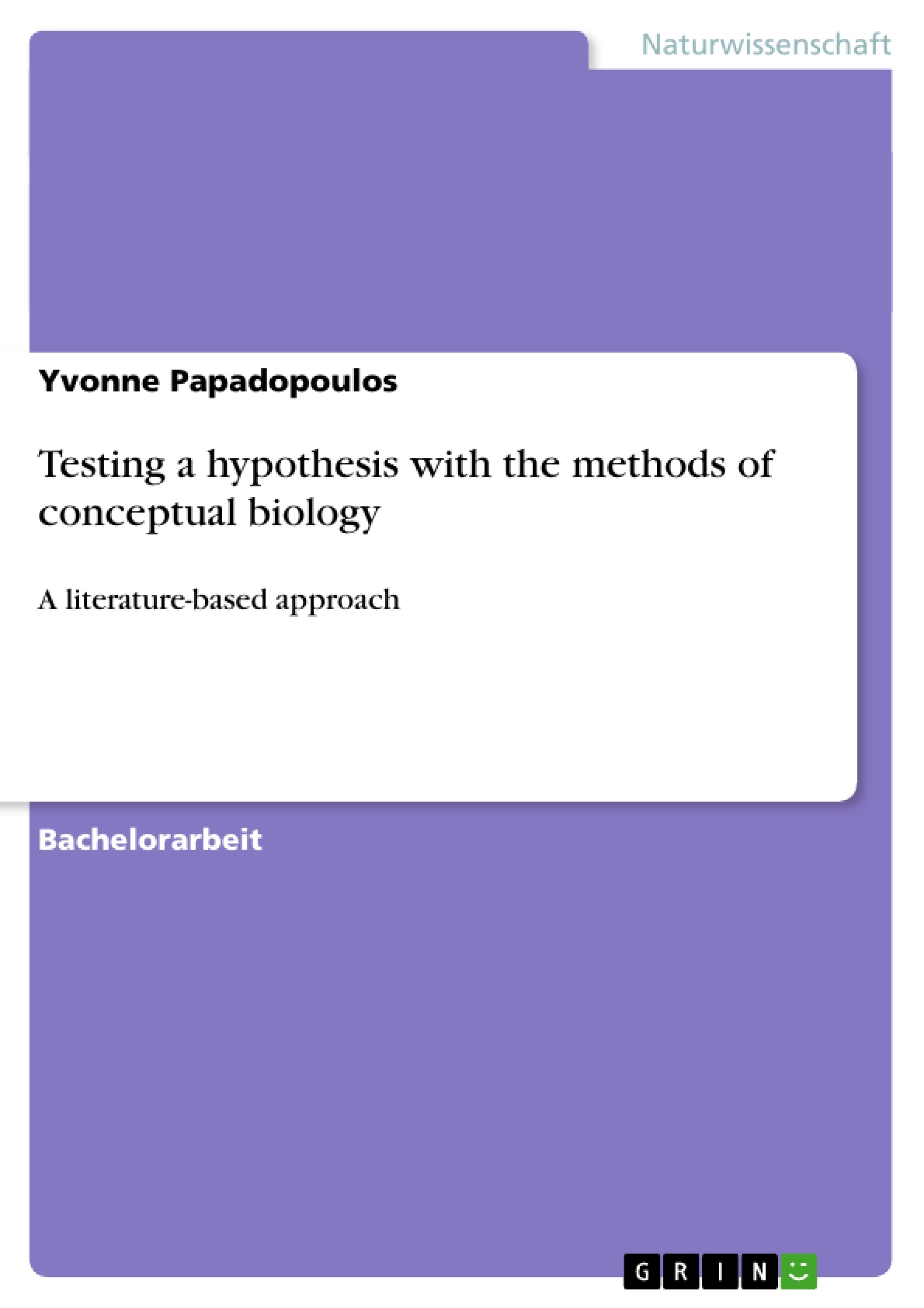Undoubtedly, the development of Conceptual Biology, which uses text-mining applications specific to biology is the only way to cope with the increasing amount of free textual data produced in this field. The increasing interest of users in efficiently retrieving and extracting relevant information, the need to keep up with new discoveries described in the literature or in biological databases, and the demands posed by the analysis of high throughput experiments, are the underlying forces motivating the development of Conceptual Biology tools, such as text-mining applications in molecular biology. Therefore the methods of Conceptual Biology have been used for this study to test the hypothesis, that genetically modified foods have no impact on public health. We studied the records of databases and those ones of Literature Based Discovery tools. After the binary scoring of the records with respect to their usefulness, they were also classified by their positive, neutral or negative conclusions with respect to the effect of genetically modified food on public health. In conclusion, we have to deny the hypothesis and therefore to state that genetically modified foods have an impact on public health. Further studies in conceptual biology may focus what kind of impact genetically modified food has on public health.
Inhaltsverzeichnis
- Abstract
- Introduction
- The scientific problem
- Materials and Methods
- MeSH (http://www.ncbi.nlm.nih.gov/entrez/query.fcgi?db=mesh)
- Using databases
- Using Literature Discovery Tools
- Arrowsmith
- BioRAT
- BITOLA
- Manjal
- LitLinker
- Evaluation and Interpretation
- Results
- Discussion
- References
- Table of Figures
- Abbrevations
- Acknowledgements
Zielsetzung und Themenschwerpunkte
Diese Bachelorarbeit befasst sich mit der Anwendung von Text-Mining-Methoden in der Konzeptuellen Biologie, um die Hypothese zu testen, dass gentechnisch veränderte Lebensmittel keine Auswirkungen auf die öffentliche Gesundheit haben. Die Arbeit untersucht die wachsende Menge an frei verfügbaren Textdaten im Bereich der Biologie und die Notwendigkeit, relevante Informationen effizient abzurufen und zu extrahieren. Die Arbeit analysiert Datenbanken und Literatur-basierte Entdeckungstools, um die Hypothese zu überprüfen.
- Anwendung von Text-Mining-Methoden in der Konzeptuellen Biologie
- Bewertung der Auswirkungen gentechnisch veränderter Lebensmittel auf die öffentliche Gesundheit
- Analyse von Datenbanken und Literatur-basierten Entdeckungstools
- Bewertung der Relevanz von Informationen für die Hypothese
- Klassifizierung von Informationen nach positiven, neutralen oder negativen Schlussfolgerungen
Zusammenfassung der Kapitel
Die Arbeit beginnt mit einer Einführung in die Konzeptuelle Biologie und die Herausforderungen, die sich aus der wachsenden Menge an wissenschaftlichen Daten ergeben. Sie beleuchtet die Notwendigkeit, effiziente Methoden zur Informationsgewinnung zu entwickeln, um mit dem rasanten Fortschritt in der Molekularbiologie Schritt zu halten. Die Arbeit stellt verschiedene Text-Mining-Tools vor, die in der Konzeptuellen Biologie eingesetzt werden, und erläutert deren Funktionsweise.
Im weiteren Verlauf der Arbeit wird die Hypothese, dass gentechnisch veränderte Lebensmittel keine Auswirkungen auf die öffentliche Gesundheit haben, anhand von Datenbanken und Literatur-basierten Entdeckungstools untersucht. Die Arbeit beschreibt die Methoden, die zur Bewertung der Relevanz von Informationen und zur Klassifizierung von Schlussfolgerungen verwendet wurden.
Die Ergebnisse der Analyse werden präsentiert und diskutiert. Die Arbeit kommt zu dem Schluss, dass die Hypothese widerlegt werden muss und dass gentechnisch veränderte Lebensmittel tatsächlich Auswirkungen auf die öffentliche Gesundheit haben. Die Arbeit regt weitere Forschungsarbeiten in der Konzeptuellen Biologie an, um die Art und Weise dieser Auswirkungen genauer zu untersuchen.
Schlüsselwörter
Die Schlüsselwörter und Schwerpunktthemen des Textes umfassen die Konzeptuelle Biologie, Text-Mining, gentechnisch veränderte Lebensmittel, öffentliche Gesundheit, Datenbanken, Literatur-basierte Entdeckungstools, Hypothese, Bewertung, Interpretation, Ergebnisse, Diskussion. Die Arbeit beleuchtet die Herausforderungen, die sich aus der wachsenden Menge an wissenschaftlichen Daten ergeben, und die Notwendigkeit, effiziente Methoden zur Informationsgewinnung zu entwickeln. Sie analysiert die Auswirkungen gentechnisch veränderter Lebensmittel auf die öffentliche Gesundheit und kommt zu dem Schluss, dass die Hypothese, dass diese keine Auswirkungen haben, widerlegt werden muss.
- Quote paper
- Yvonne Papadopoulos (Author), 2006, Testing a hypothesis with the methods of conceptual biology, Munich, GRIN Verlag, https://www.grin.com/document/132062



